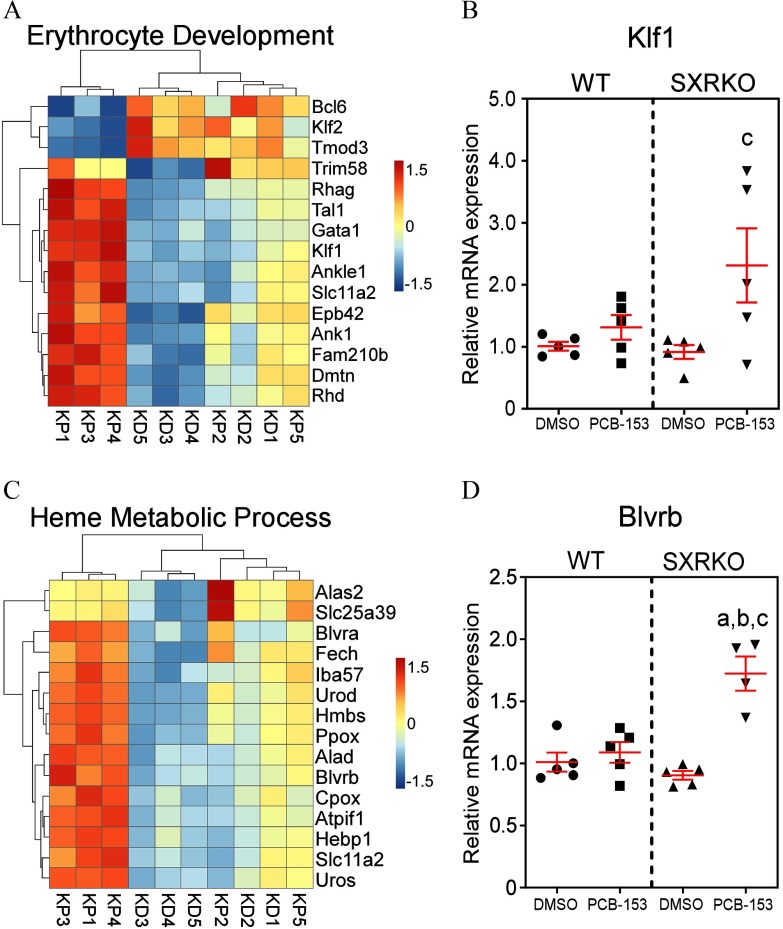Figure 3.
Differentially expressed genes in erythrocyte development and heme metabolism in the spleen between steroid and xenobiotic receptor knockout (SXRKO) mice perinatally exposed to polychlorinated biphenyl 153 (PCB-153) and vehicle. (A) Differentially expressed genes (DEGs) involved in erythrocyte development in the spleen of SXRKO mice exposed to PCB-153 compared to SXRKO mice exposed to dimethylsulfoxide (DMSO). (B) Kruppel-like factor 1 (Klf1) erythroid transcription factor quantitative real-time polymerase chain reaction (qPCR) gene expression analysis (). (C) Heatmap of DEGs related to heme metabolism in the spleen of SXRKO mice exposed to PCB-153 compared to SXRKO mice exposed to DMSO. (D) Biliverdin B (Blvrb) qPCR gene expression analysis () in the spleens of WT and SXRKO mice exposed to DMSO or PCB-153. qPCR data plotted as mean fold change over WT . a, statistically significant compared to WT DMSO; b, statistically significant compared to WT PCB; c, statistically significant compared to SXRKO DMSO determined by two-way analysis of variance (ANOVA) and Tukey’s multiple-comparisons test. Note: D, DMSO exposure; K, SXRKO mice; P, PCB-153 exposure; W, WT mice.

